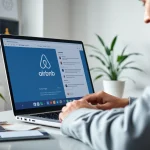Understanding the Importance of a Customer Service Resume Summary
In the competitive landscape of job hunting, crafting an impactful resume is crucial. One of the most significant aspects of a resume is the resume summary. This concise overview of your professional background acts as a hook to catch hiring managers’ attention and encourages them to read further. Especially for customer service professionals, who often possess a range of interpersonal and technical skills, this summary needs to effectively communicate your value to potential employers. To explore tailored customer service resume summary examples can provide a strong foundation for effectively presenting your abilities.
What is a Resume Summary?
A resume summary is a brief statement, typically 2 to 4 sentences long, located at the top of your resume, providing a snapshot of your qualifications, skills, and experiences relevant to the position you are applying for. Unlike a resume objective, which describes your career goals, a summary focuses on what you bring to the table. It aims to quickly convey your strengths and entice hiring managers to delve deeper into your resume.
Why It Matters for Customer Service Professionals
For customer service professionals, a strong resume summary is paramount due to the sector’s emphasis on soft skills, problem-solving abilities, and customer relationship management. This brief section sets the tone for your resume and showcases your aptitude to engage positively with customers and resolve issues effectively. Effectively crafted, it can underline your suitability for roles ranging from entry-level support to senior management positions in customer service.
Common Mistakes to Avoid
In crafting your resume summary, avoid common pitfalls that can detract from your presentation:
- Being too vague: Specificity is crucial. Avoid generic phrases like “hardworking” or “great team player” without context.
- Using jargon: While industry-specific language can demonstrate expertise, excessive jargon may confuse the reader.
- Neglecting results: Focusing solely on responsibilities without showcasing achievements can make your summary less impactful.
- Failing to tailor: Neglecting to customize your summary for specific roles results in missed opportunities to align with job descriptions.
Key Elements of Compelling Customer Service Resume Summary Examples
Highlighting Relevant Skills
Your resume summary should prominently feature your most relevant skills, particularly those in demand within customer service roles. Focus on both hard skills, such as proficiency in customer relationship management (CRM) software or product knowledge, and soft skills, like communication and empathy. Examples include:
- Proficient in CRM software (Salesforce, Zendesk) and adept at managing customer relationships.
- Excellent conflict resolution skills, ensuring customer satisfaction while maintaining company policies.
Including Specific Achievements
Metrics and achievements speak volumes. Instead of merely listing job duties, showcase quantifiable successes that illustrate your capabilities. This could include revenue growth, customer satisfaction ratings, or improved response times. Here are some examples:
- Increased customer satisfaction scores by 20% within one year by implementing proactive follow-up procedures.
- Successfully resolved 95% of customer inquiries on the first contact, enhancing overall service efficiency.
Tailoring for Job Descriptions
Each job is unique, and your resume summary should reflect this. Tailoring involves carefully reading the job description and integrating pertinent keywords and phrases, aligning them with your skills and experiences. Utilizing this approach not only optimizes your resume for applicant tracking systems (ATS) but also demonstrates your interest in the specific role.
Step-by-Step Guide to Crafting Customer Service Resume Summary Examples
Researching the Role
Understanding the customer service industry trends and the specific role you are targeting is essential for crafting your resume summary. Research job postings, company reviews, and industry reports to gather insights into what qualifications and skills are most valued. Identify common themes or skills that align with your experience and weave them into your summary.
Drafting Your Summary
Begin drafting your summary by formulating a statement that captures your top skills, results, and aspirations succinctly. Maintain clarity and directness—each word should serve a purpose. Use active language and start with your current role or expertise, summarize relevant achievements, and conclude with a statement of your career objectives or passion for customer service.
Revising and Seeking Feedback
Your first draft is hardly the final version. Revise your summary multiple times, focusing on improving clarity, brevity, and effectiveness. Seeking feedback from mentors or peers can provide invaluable perspectives; they might identify strengths or weaknesses you’ve overlooked.
Analyzing Real-World Customer Service Resume Summary Examples
Entry-Level Examples
If you’re new to the customer service field, focus on transferable skills from volunteer work or education. For instance:
“Energetic and empathetic recent graduate with experience in retail and strong interpersonal skills, committed to delivering excellent customer experiences.”
Mid-Level Professionals
For those with some experience, highlight achievements and relevant skills. Consider the following:
“Dedicated customer service representative with over 5 years of experience. Proven track record of enhancing customer satisfaction by implementing effective support initiatives and achieving a 98% resolution rate.”
Experienced Customer Service Leaders
As an experienced leader, your summary should reflect strategic vision and achievements. An example could be:
“Results-driven customer service manager with over 10 years of experience leading teams to exceed performance targets, driving a 30% increase in customer retention through targeted service improvements.”
Measuring the Impact of Your Summary on Job Applications
Using Metrics to Track Success
To evaluate the effectiveness of your resume summary, consider tracking metrics associated with job applications. A/B testing – using different versions of your resume in applications – can reveal which format or content resonates more with employers. Keep an eye on response rates and interview invitations to assess success.
Adjusting Based on Employer Feedback
Employers may provide feedback, either directly or through casual remarks during interviews. Take note of their observations regarding your resume summary and adjust accordingly. If they frequently mention a lack of focus on a particular skill or experience, refine your summary to address those concerns.
Continually Improving Your Resume
Your resume is a living document. Ongoing refinement should be part of your job search strategy. Continually update your summary as you gain new experiences, acquire new skills, or receive constructive feedback. Regularly revisiting your resume ensures that it remains relevant and compelling, positioning you favorably in the evolving job market.


